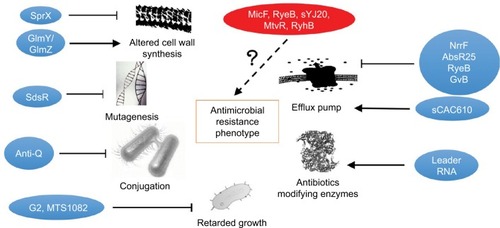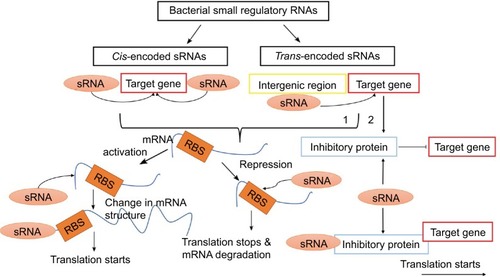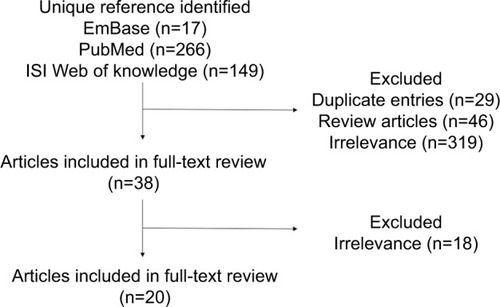Figures & data
Table 1 Summary of the included studies
Table 2 Summary of study quality assessment
Figure 2 Small bacterial RNAs interact with canonical (in blue) and unknown mechanisms (in red) in acquisition of antimicrobial resistance phenotype. The pointed arrowheads denote putative stimulatory effect whereas the blunted arrowheads represent inhibitory actions.

Figure 3 The biological action of small bacterial RNAs. These molecules are classified into cis- and trans-encoded sRNAs. By binding to non-coding region of mRNA or a gene per se, sRNAs either activate or repress the expression of a given protein.
Abbreviation: RBS, RNA binding site.


